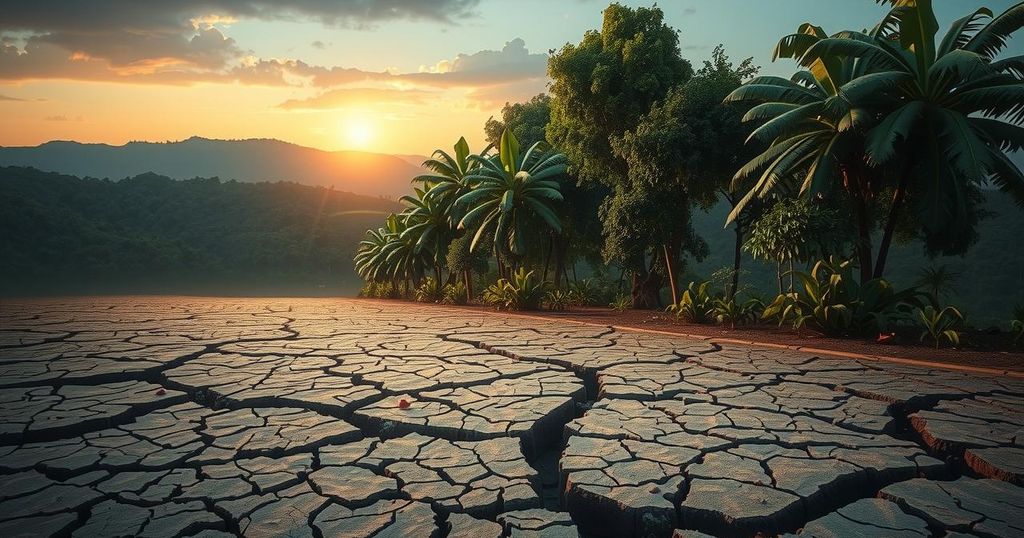A study indicates that climate change could reduce cocoa production areas in West and Central Africa by 50% by 2050. The analysis covers key cocoa-producing countries and employs a crop model to predict yield changes under various climate scenarios. Results show regional yield declines, with significant effects on future cocoa farming and potential biodiversity loss.
A recent study reveals that due to climate change, West and Central Africa may lose up to 50% of their cocoa-suitable land by 2050. This region is crucial as it produces over 70% of the world’s cocoa, with Ivory Coast and Ghana being the largest contributors, followed by Nigeria and Cameroon.
The research evaluated cocoa production in the four primary cocoa-producing nations, using historical yield data from 1980 to 2010 and projections from 2030 to 2060. Utilizing the CASEJ mechanistic cocoa crop model, researchers predicted the effects of climate on cocoa growth, factoring in variations in rainfall and temperature while simulating different levels of carbon dioxide.
Results indicated that certain areas would gradually become less suitable for cocoa farming, while others may benefit from climate change. Regions such as the northern areas of Ghana and Ivory Coast are projected to see yield reductions of around 12%. Nigeria and Cameroon may experience lesser drops in yield, at approximately 10% and 2%, respectively.
The findings suggest a potential shift in cocoa production from Ghana and Ivory Coast towards eastern nations like Nigeria and Cameroon. This transition could have significant implications for Cameroon’s forests, which contain vital biodiversity, as increased cocoa demand may drive deforestation.
Adapting cocoa production to climate change while addressing deforestation will pose substantial challenges in the coming years. The study emphasizes the importance of integrating cocoa physiology knowledge with expected climate changes.
Uncertainties persist regarding the effects of rising carbon dioxide levels, particularly concerning how they may affect drought resilience and plant growth. Ongoing research will be essential to understand climate impacts on cocoa flowering, fruiting, and pest evolution for future agricultural preparedness.
The topic revolves around the potential impacts of climate change on cocoa production in West and Central Africa, regions that are instrumental in global cocoa supplies. With increasing temperatures and varying precipitation patterns, the suitability of land for cocoa farming is expected to decline. Recognizing the significance of cocoa economy and biodiversity, it is pivotal to address these environmental changes and their repercussions on agriculture and deforestation.
The study underscores the urgency of understanding climate change’s effects on cocoa production in West and Central Africa, particularly as the region accounts for a dominant share of the world’s cocoa supply. With predictions indicating significant reductions in suitable farming areas, adaptable strategies must be developed to mitigate deforestation and maintain biodiversity while supporting agricultural needs. Further scientific research remains critical to address the complexities of climate-induced changes on crops.
Original Source: www.downtoearth.org.in






